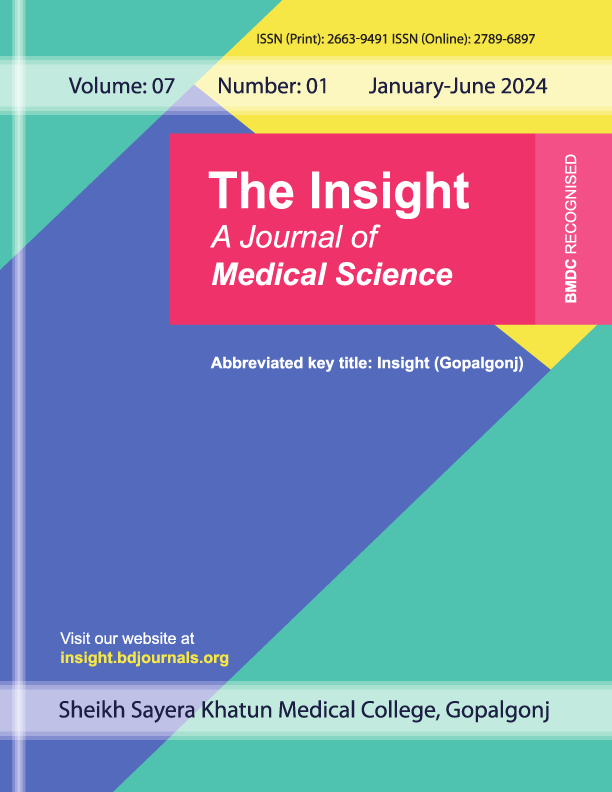Role out of CT scan in the Suspected Cerebral Ischaemic Stroke Patients Attended in the Department of Neurology in a Tertiary Level Hospital
Published 15-11-2024
Keywords
- Role,
- CT scans,
- Suspected,
- Cerebral,
- Ischaemic
- Stroke,
- Patients ...More
Copyright (c) 2024 The Insight

This work is licensed under a Creative Commons Attribution 4.0 International License.
How to Cite
Abstract
Introduction: Cerebral ischemic stroke remains one of the leading causes of disability and death worldwide, accounting for about 85% of the total stroke burden. The cornerstone of treatment involves early and accurate diagnosis to initiate timely treatment to reduce mortality and improve long-term outcomes. Among the diagnostic tools, CT scans have become the first-line imaging modality in stroke management because of their ready availability and fast provision of results. Methods & Materials: This was a descriptive type of cross-sectional study conducted at the Department of Neurology in Chittagong Medical College and Hospital, Chattrogram, Bangladesh during December, 2023 to May, 2024. A series of 131 suspected ischaemic stroke cases irrespective of sex, aged above 32 years, were included in this study using consecutive sampling method. Results: A series of 131 suspected ischaemic stroke cases were included in this study. The mean age of the patients was 60.34±10.45 years and the most frequent age group was 62-71 years which includes 41(31.29%) patients. The majority of the patients 74 (56.48%) were male, and 57 (43.51%) were female. The majority of the patients 38(29.00%) were businessman and the most frequent 69 (52.67%), belonged to the lower socio-economic condition. Conclusion: This study investigated that the majority of the patients (73.28%) had ischaemic stroke, 26 (19.84%) patients had intracerebral hemorrhage, 3(2.29%) patients had subarachnoid hemorrhage and 6(4.58%) patients were diagnosed normal. The most common risk factors contribute to cerebral stroke were hypertension, diabetes mellitus, and the most prevalent clinical presentations included hemiplegia aphasia, and gait disturbances. These findings highlight the need for targeted interventions in high-risk groups.


